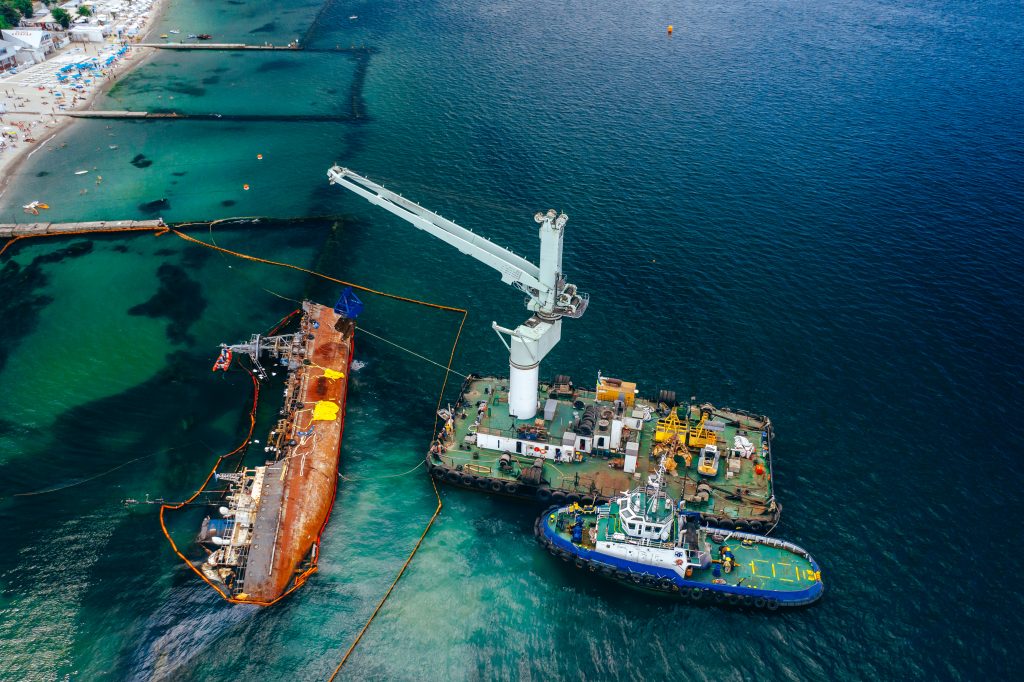Structural Strength Assessment (Offshore & Onshore)
- February 9, 2024
- Posted by: Velosi Author
- Categories: Asset Integrity, Insights

Structural strength assessment ensures the durability of the petroleum structures, thus safeguarding both the environment and the surrounding individuals.
In the world of exploring the oil and gas industry and its resources, the success rate depends greatly on the structural integrities of both on-shore and off-shore facilities.
Let us delve into the basic technicalities behind structural strength assessment with a proper focus on the off-shore and on-shore structure formalities. The capability of structural strength assessment in the oil and gas industry relies on a significant factor of structural Integrity Management Systems (SIMS).
What is Structural Strength Assessment?
Structural strength assessment refers to the durability and evaluation of a structure’s ability to withstand natural or artificial forces subjected to it in real life. The SSA plays a critical role in ensuring the safety and reliability of both on-shore and off-shore structures so that all the resources can be used properly for the best outcomes.
Here’s a detailed overview of both on-shore and off-shore considerations that must be your main focus while building structural monuments for your petroleum sites.
- Offshore Challenges:
Off-shore structures always face a great number of threats due to their unique locations in the heart of sea conditions.
Unlike the shore-based structure, such structures include the use of different analysis facilities to precisely detect the impact of waves, wind, and rusty marine situations that can easily lead the base of the structures to quick corrosion.
Therefore, petroleum professionals use cutting-edge technology such as Finite Element Analysis (FEA) and Computational Fluid Dynamics (CFD) to limit such environmental factors.
Thus, enhancing the durability of the off-shore structures along with their versatility. As a result, high-quality materials are the basis to withstand such critical situations in the ocean.
- Onshore Considerations:
Being a part of the land saves on-shore structures from a great number of challenges. However, it still has its land issues that can ruin its base and lead to its destruction in no time. If we talk about such challenges then seismic activity, soil composition, and potential human-made risks are included in the list of Structural strength assessments for the on-shore projects.
To overcome this situation, professional geologists take their time to research in-depth about the soil features and if it can bear the weight of the petroleum structures. In addition, steps are also taken to protect onshore structures from being damaged by the environment and make proper plans to deal with natural disasters like earthquakes and tornados.
Main Types of Off-Shore Structures & SSA:
Dead Loads:
The dead loads include the permanent weight a structure must bear throughout its operational life. It includes the water support weights, pipes, and other prominent factors.
Therefore, it is important to know how much weight the building will have on it to build strong foundations that will last a long time.
Live Loads:
The live loads include the weight of the moveable components in an off-shore structure. Engineers need to study how the moving loads affect the structure using advanced computer simulations. Which in turn helps them understand how the structure will respond to the loads.
Seismic & Environmental Loads:
The seismic loads refer to the ground motion challenges such as Earthquakes. Meanwhile, Environmental loads are the challenges faced due to natural factors such as winds and waves in the ocean.
Importance of Structural Integrity Management System (SIMS)
SIMS acts as a savior of all these structural projects by supporting them against all forces of odds in their operational life. It is based on a comprehensive approach of accurate monitoring, inspection, and maintenance strategies to ensure proper reliability of the on-shore and off-shore projects.
Moreover, it means regularly checking for problems, identifying issues early, and fixing them efficiently. SIMS has been the best choice for engineers and professionals in this field to extend the life span of their buildings, reduce the project downtowns, and even eliminate all the risks of structural collapse.
If we talk about monitoring the best way to overcome this situation is the use Non-Destructive Testing (NDT) methods. They provide the perfect assistance in identifying any major or minor signs of degradation, ensuring protective layers, and admiring the acceptable limits for the structural projects whether off-shore or on-shore.
VAIL Plant Module – Structural Integrity Management System (SIMS)
VAIL Plant Structural Integrity Management System (SIMS Software) serves as a robust mechanism for ensuring adherence to both regulatory and organizational mandates over an extended duration, with the ultimate goal of maintaining the structure’s suitability for its intended purpose until its decommissioning or removal. The implementation of an efficacious SIM system is of utmost importance in mitigating disastrous failures within industrial infrastructures.
Benefits of SIMS Software
- Recognizes and evaluates the safety, environmental, and commercial risks linked to the operation of structures.
- Identifies, institutes, and sustains appropriate measures to mitigate risks.
- Ensures that the structural designs are suitable for their intended purpose and engineered according to approved standards.
- Minimizes risks to personnel, the environment, and business profitability to the lowest level that is reasonably practicable.
- Guarantees the integrity of structures throughout all stages of their life cycle and assigns single-point accountability.
Advanced Simulation Techniques:
As mentioned above, off-shore SSA includes the use of Finite Element Analysis (FEA) and Computational Fluid Dynamics (CFD) as the premium options that take center stage.
Ensuring proper reliability and versatility for a structural project, these methods allow engineers to study complicated buildings and bridges when they have to hold different things.
It helps them find the weak spots and places that might break. On the other hand, CDF works on the fluid flow pattern. Thus, preventing all major risks from waves and winds against the off-shore structures. Using these modern techniques boosts the structure quality of petroleum-exploring buildings.
Conclusion
The Structural Strength Assessment team must be responsible for overcoming all these issues and safeguarding the structural integrity of offshore installations in earthquake-prone and wave-tackling zones. It is not for sure a one-size-fits-all solution, and it requires careful consideration of the specific characteristics and loading conditions of each structure. Therefore, it is essential to consult with experienced and qualified professionals who can provide the best guidance and support for your structural strength assessment needs.
Please contact us for more information and assistance.




